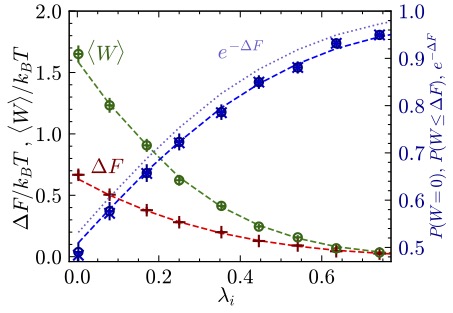Nicolas Barros, Sergio Ciliberto, Ludovic Bellon, Phys. Rev. Lett. 133, 057101 – Editor’s suggestion
[letter] doi: 10.1103/PhysRevLett.133.057101
[dataset] doi: 10.5281/zenodo.10721407
We demonstrate experimentally that, applying optimal protocols which drive the system between two equilibrium states characterized by a free energy difference ΔF, we can maximize the probability of performing the transition between the two states with a work W smaller than ΔF. The second law holds only on average, resulting in the inequality ⟨W⟩≥ΔF. The experiment is performed using an underdamped oscillator evolving in a double-well potential. We show that with a suitable choice of parameters the probability of obtaining trajectories with W≤ΔF can be larger than 90 %. Very fast protocols are a key feature to obtain these results which are explained in terms of the Jarzynski equality.
Our letter was spotted by Karmela Padavic-Callaghan, physics reporter from the New Scientist. Read their interview and presentation of our work for a wide audience : A microscopic diving board can cheat the second law of thermodynamics

